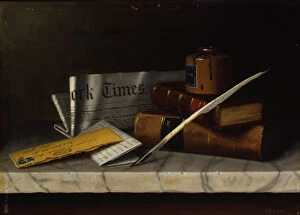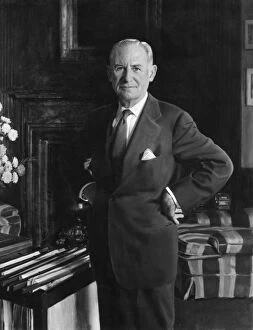New York Times Collection
"The New York Times: A Captivating Journey Through Time and Influence" Step into the iconic New York Times Building, standing tall in the heart of Manhattan
All Professionally Made to Order for Quick Shipping
"The New York Times: A Captivating Journey Through Time and Influence" Step into the iconic New York Times Building, standing tall in the heart of Manhattan, as it symbolizes the rich history and journalistic excellence that this renowned publication embodies. From its humble beginnings to becoming a global media powerhouse, The New York Times has left an indelible mark on society. Immerse yourself in Still Life with Letter to Mr. Clarke, a captivating artwork from 1879 that showcases the artistry behind storytelling. This oil painting mounted on masonite captures the essence of communication through written words, reminding us of how The New York Times has been instrumental in shaping public discourse for over a century. Adolph Ochs, the visionary creator who acquired The New York Times in 1896, is immortalized by Philip A de Laszlo's portrait from 1926. Ochs' leadership transformed this newspaper into an influential institution that continues to inform and inspire millions worldwide. Travel back to October 30th, 1929 - a fateful day etched in history as stock-market listings recorded by The New York Times reflect the devastating crash that triggered the Great Depression. This reminder serves as a testament to how journalism can shed light on economic realities and hold power accountable. Witness early 20th-century America come alive through snapshots of bustling streets surrounding The New York Times Building. These images capture not only architectural grandeur but also evoke nostalgia for an era when print media reigned supreme. Experience moments where world leaders converge within these hallowed walls; U. S Secretary of State John Kerry confers with his aide Christopher Flanagan or engages in thought-provoking conversations with esteemed columnist Thomas Friedman. Such interactions highlight how The New York Times remains at the forefront of political dialogue and diplomacy. Delve into historical artifacts like lithograph letterpresses from February 9th, 1895 - tangible evidence of how news was disseminated in the past.
















